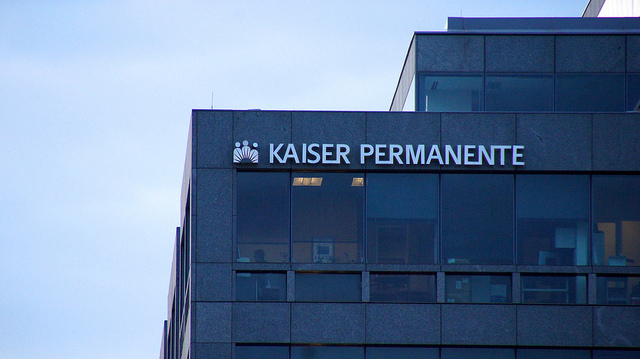
On Thursday, the Coalition of Kaiser Permanente Unions voted to ratify a new contract, putting to end what was the largest strike in the history of the healthcare industry.
The coalition comprises 85,000 members across seven states and Washington, D.C., representing about half of Kaiser Permanente’s workforce. It voted to approve the new contract by a margin of 98.5%.
The new contract will run retroactively from October 1 through September 30, 2027. It includes terms for higher wages, more employee education, increased hiring and retention efforts, and greater involvement of frontline workers in the health system’s staffing decisions.
Kaiser workers began striking on October 4 after hitting a wall in a monthslong bargaining process with their employer. The coalition’s chief concern was that Kaiser was not giving it a contract that adequately addressed the health system’s low staffing levels, which members say caused excessively long wait times, patient neglect and mistaken diagnosis.
The new contract addresses the staffing crisis by increasing wages by 21% over four years for better worker retention. It also establishes a minimum wage for Kaiser’s healthcare workers: $25 per hour in California and $23 in other states.
To improve staffing further, the contract puts in place a one-year accelerated hiring process. This is designed to reduce delays to external hiring as well as make it easier for internal workers to meet staffing needs — the new process gets rid of duplicative testing requirements and decreases experience barriers for incumbent staff members. Kaiser also said it would invest $100 million over four years to recruit and train 10,000 members of local communities to join its healthcare workforce, said Caroline Lucas, executive director of the Coalition of Kaiser Permanente Unions, in an interview.
In addition, the contract increases Kaiser’s education funding for its incumbent employees by 40%, she noted. The health system promised to train its staff to step into roles with an acute shortage, such as radiology technicians, licensed practical nurses and laboratory assistants. The new contract also includes protective terms around outsourcing and subcontracting, which are meant to keep experienced workers in their roles to maintain care continuity for patients.
One particular aspect of the new contract that union members are especially excited about is that it establishes a forum for frontline healthcare workers at the department level to inform Kaiser leadership on what staffing should look like in their units, Lucas added.
“This is a historic moment,” she declared. “This is a time when 85,000 frontline healthcare providers stood together in solidarity across our country in the biggest healthcare strike in U.S. history and return back to their worksite and back to their patients with a contract that provides for safer staffing, which ultimately results in better patient care.”
Kaiser said it will begin implementing the national contract immediately. The health system also said it looks forward to working together with its frontline workers on staffing decisions in the future.
Acting U.S. Labor Secretary Julie Su played a “pivotal role” in getting Kaiser to agree to a new contract, Lucas pointed out. She said that Su would stay up until 1 or 2 a.m. listening to workers and hearing their stories of pain and frustration. Su used the insight she gained from those stories in the conversation she had with Kaiser’s leaders at the bargaining table.
“She was able to really effectively communicate those workers’ needs to the Kaiser senior leadership, which I think ultimately helped sway their opinions and final actions,” Lucas remarked.
Lucas also noted that her coalition is proud to be part of the larger labor rights movement occurring across the country — spanning from actors to auto workers to retail pharmacy workers.
“For the labor movement overall, workers are really responding to rising corporate greed across healthcare and all industries,” she declared.
Throughout the strike, the coalition was clear in its belief that Kaiser has the means to invest adequately in safer staffing.
Kaiser is a nonprofit health system, so it pays zero income taxes on its earnings and very limited property taxes. However, the organization has posted more than $24 billion in profit over the past five years, the coalition pointed out. Additionally, Kaiser CEO Gregory Adams was paid more than $16 million in 2021, and nearly 50 of the health system’s executives are compensated more than $1 million per year.
Kaiser also has investments totaling $113 billion — both domestically and abroad — in areas such as fossil fuels, for-profit prisons, alcohol companies, casinos and military weapons, the coalition added.








